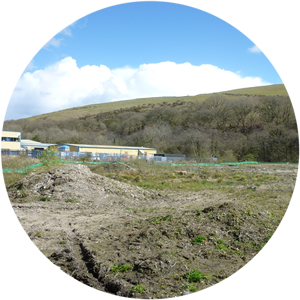
Flood risk isn’t just the risk of the closest river flooding.
The risks of flooding from all other potential sources must be understood, including:
- surface water flooding
- sewer flooding
- reservoir flooding
- flooding from even the smallest catchment, where at first glance the risk could easily be assumed to be negligible.
A case in point
At a residential development site in Blackwood, South Wales, the main risk of flooding wasn’t from the nearest river. Previous studies failed to identify all of the sources of flooding at the site and the planning application was rejected on flood risk grounds.
Enter WHS
We were commissioned to improve the understanding of flood risk from all sources.
Using our intimate knowledge of catchment analysis and flood flow estimation techniques, we identified a small catchment to the north of the site that had been missed. This was probably because the catchment fed into a small channel that appeared to have been artificially filled in at some point in the past.
Using bespoke catchment descriptors, we calculated the peak flow and hydrographs for the 1.0% Annual Exceedance Probability (AEP) and 0.1% AEP flood events. Coupling this information with the latest flood modelling software, we then mapped this new flood extent, enabling us to understand and quantify the flood risk that had eluded previous studies.
Managing the flood risk
Understanding is only half the battle. With our improved understanding, we were in a unique position to advise our client on the most appropriate ways forward:
- managing the flood risk
- reinstating the watercourse
- overcoming the objections that were preventing the development from progressing through planning.
Flood risk mitigation measures we considered included:
- an oversized channel
- development plateaux
- an online storage pond.
After modelling these options, we concluded that an oversized channel with a development plateau should ensure that the site is flood free during the 0.1% AEP flood event and avoid increased downstream flood risk.
Our detailed assessment of the catchment and improved understanding of flood risk, meant we could demonstrate that the development could be kept safe throughout its lifetime.
The last word
The regulator accepted:
- our assessment
- our understanding of the flood risk
- our ability to mitigate the risks, protecting the site and avoiding increases in flood risk downstream.
Planning was approved.